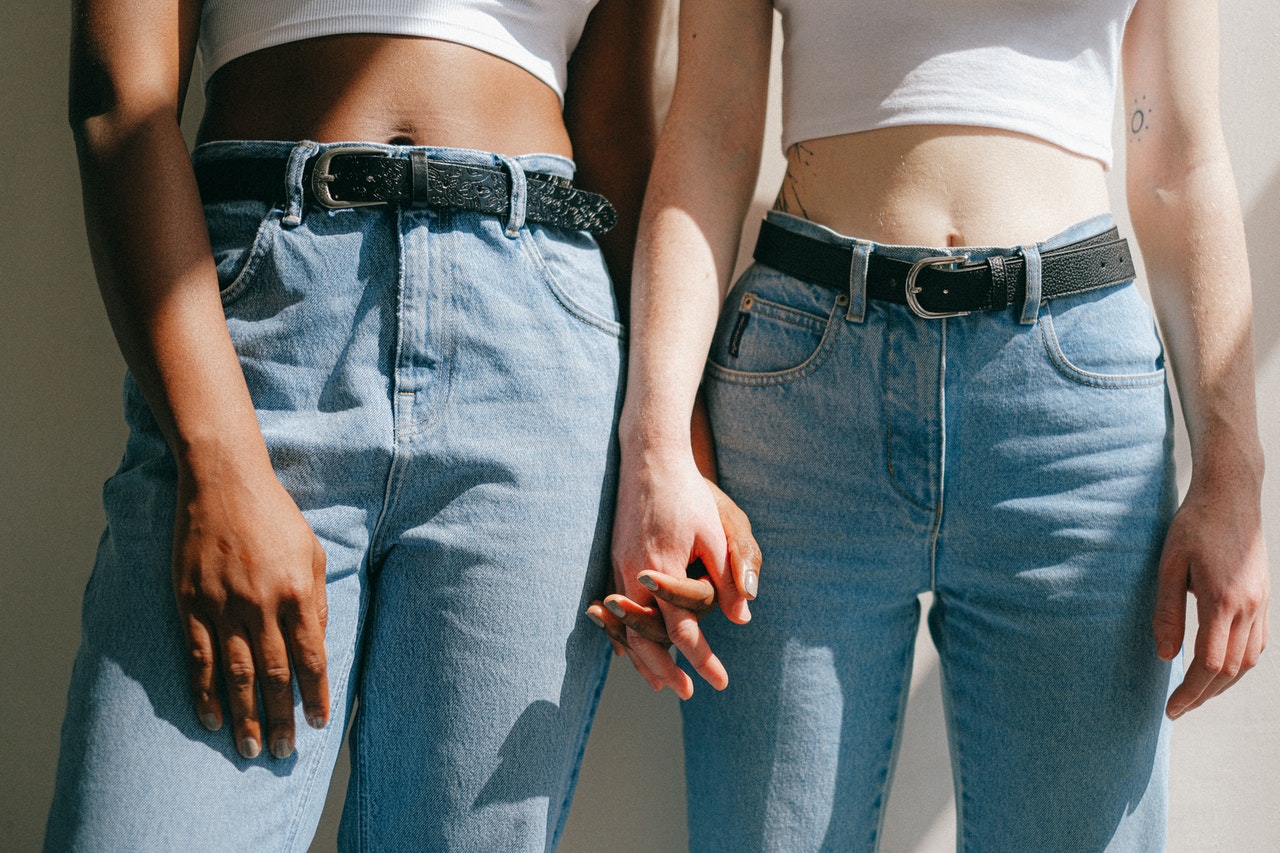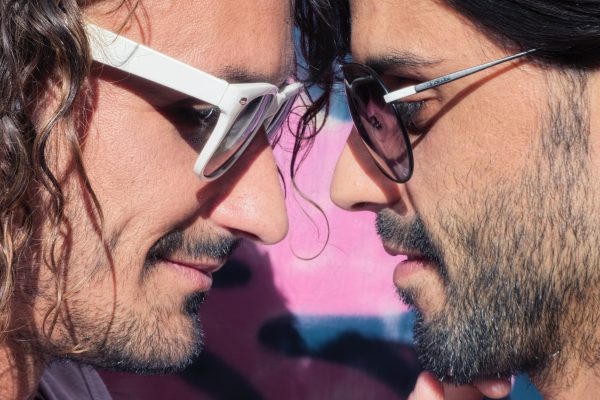What are some of the main differences between same-sex and hetero couple (apart from the obvious ones)? One of the interesting distinctions has been established in a comprehensive study that paints a pretty intriguing picture.
As per the study findings, same-sex couples are generally a lot happier than their straight counterparts. What could the reasons for that disparity be?
The Study
According to researcher Stephanie Coontz, there are historical, personal and societal reasons why gay couples tend to be happier. These easily explain the findings of studies on the topic.
Coontz based her observations on a recent study that was presented in the Journal of Marriage and Family.
In the study, 756 Americans in straight, gay or lesbian marriages/relationships were asked to keep a diary for a period of 10 days. The aim of the diary was to keep track of their happiness and distress level on a daily basis.
There were notable gender differences in the level of distress reported by the participants and by their spouses. Men in same-sex marriages were the ones to report the lowest level of distress. On the other end of the spectrum, women in heterosexual marriages turned out to be the most anxious demographic participating in the experiment.
Women in same-sex marriages fell somewhere in the medium when it came to the stress and marriage contentment level.
Why Are People in Same-Sex Relationships Happier?
You probably have your own theory to explain the study findings but Stephanie Coontz has outlined a number of factors that make challenging situations even more difficult to handle when you are in a traditional, heterosexual relationship.
Heterosexual marriages and serious relationships are historically characterized by higher levels of tension and miscommunication, Coontz claims in an opinion piece for New York Times. In addition, there have been some expectations and specific roles assigned to each member of such a relationship. The power imbalance between the two partners could have been seen as a serious cause of discontentment.
Up to the 1970s, men took charge of nearly every aspect of a woman’s life – from financial freedom to her ability to express sexuality.
The situation started changing in the 1980s and 1990s when American women managed to achieve a high level of equality with their partners. Still, some historical and social connotations remain alive. This is especially true for societal segments characterized by more traditional views.
In theory, we have gone a long way.
In real life, the situation is a bit more multi-dimensional.
A 2006 study shows that only a third of heterosexual couples questioned had managed to achieve equality in sharing housework and overcoming traditional gender roles. For the vast majority of heterosexual people in the US, marriage increases the stereotypical duties and responsibilities of men and women.
Additional research suggests that once women get married, the amount of housework they need to handle on a regular basis increases steadily. The situation becomes even more troublesome and gender roles are enforced further after the birth of children.
Same-Sex Couples Are Free from Societal Expectations
Due to the fact that same-sex couples are freed from the societal stereotypes and gendered norms affecting heterosexual marriages, they enjoy a lot more flexibility and better communication. Male-female differences regarding chores and responsibilities do not apply. As a result, people in same-sex marriages are equally likely to take on tasks that would traditionally be considered either masculine or feminine.
Just like in the case of heterosexual couples, the birth of children is likely to change family dynamics.
One of the parents will typically become a stay-at-home parent. What’s interesting, however, is the specific way in which same-sex couples handle household chores and responsibilities. The stay-at-home parent is less likely to be assigned “female” tasks and the couple would still talk about what each one would want to do at home.
The Sexuality of Same-Sex and Hetero Couples
One more very important difference exists between straight and gay couples. That difference involves the manners in which people in a relationship discuss and explore their sexuality.
According to sociologists, once formalized, male-male and female-female relationships are as stable (sometimes even stronger) as those of heterosexual couples.
Researchers believe that a deep level of intimacy is the reason behind this phenomenon.
Very often, men and women in a straight relationship find it difficult to explore their sexuality and be honest with their partner without experiencing shame. Something as simple as talk about fantasies or the purchase of sex toys like strap-on dildo harnesses becomes nearly impossible.
Patriarchal views of the “traditional” family and gender rules have left their legacy on this aspect of marriage, as well.
Same-sex couples have been a fringe demographic for a very long time. They have had to fight for their rights, including the freedom to be sexually liberated. In a sense, gay people have gone through their own sexual revolution while engaging in the battle to win equal rights.
While women have also been sexually liberated to a large extent, traditional notions and understandings of heterosexual sexuality cannot be eliminated in just a few years or decades. They are still very much alive (just think about the manner in which women who are promiscuous or confident in their sexuality will be perceived).
Happy, satisfying sex and physical intimacy are obviously vital for most people who want to forge a stable and long-lived relationship. If such intimacy cannot be achieved effortlessly, the level of discontent will grow.
Lessons Straight People Can Learn from Same-Sex Couples
It’s about time for traditional gender roles to die.
Many of these expectations are based on outdated notions and sexist understandings of female and male characteristics. Such rigid rules don’t just harm women in a relationship, they impact men, as well. Guys are often expected to toughen up, earn a steady income and show no signs of vulnerability. Sooner or later, such a level of responsibility can backfire seriously and disturb one’s mental wellbeing.
Same-sex marriages cannot escape societal expectations completely. There are still some stereotypical notions that get in the way of their dynamics. Gay and lesbian men haven’t achieved the absolute level of enlightenment and liberation yet. They have their own struggles. Some couples will split, some will even go through ugly divorces. When it comes to meeting a partner’s emotional needs and choosing a mutually-beneficial arrangement, same-sex couples have gotten to be much better than their straight counterparts.
Same-sex couples are more likely to communicate openly, check in with each other and work on active intimacy establishment. They monitor relationship quality and if something doesn’t seem to be working, they generally wouldn’t sweep it under the rug.
Such behaviors and understandings of relationship stability can produce long-lived, happy marriages for everyone involved. The rules of the game are the same for both gay and straight couples. For the time being, however, people in same-sex marriages are simply more likely to enforce such positive behaviors.
Every couple has specific vulnerabilities. What matters the most is identifying those and tackling them right from the start. Everyone will face challenges, obstacles and setbacks. Relationships take work and this work has to be personalized. What does the trick for one couple isn’t necessarily going to be suitable for someone else. Happiness is all about communication, care and checking in often. As a relationship grows and evolves, so should the people in it.






